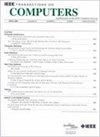橄榄型网络:一种均匀驱动的物联网系统鲁棒拓扑生成方案
IF 3.6
2区 计算机科学
Q2 COMPUTER SCIENCE, HARDWARE & ARCHITECTURE
引用次数: 0
摘要
随着物联网(IoT)系统规模的不断扩大,由于设备故障或网络攻击导致的节点故障频频发生。现有的鲁棒网络生成方法利用启发式算法或神经网络方法来优化初始拓扑。这些方法没有探索拓扑鲁棒性的核心,即如何将边分配给拓扑中的每个节点。因此,这些方法使用大量的迭代过程来优化初始拓扑,当拓扑规模较大时,导致大量的时间开销。研究了各种鲁棒网络,发现均匀度分布是拓扑鲁棒性的核心。因此,我们为物联网系统提出了一种新颖的统一性驱动鲁棒拓扑生成方案(UNITY),以防止节点度过高或过低,从而平衡节点度。综合实验结果表明,使用UNITY生成的网络具有由大量中等程度节点组成的“橄榄状”拓扑结构,对随机节点故障和针对性攻击都具有较强的鲁棒性。这一有希望的结果表明,UNITY在设计健壮的物联网系统方面取得了重大进展。本文章由计算机程序翻译,如有差异,请以英文原文为准。
Olive-Like Networking: A Uniformity Driven Robust Topology Generation Scheme for IoT System
With the scale of the Internet of Things (IoT) system growing constantly, node failures frequently occur due to device malfunctions or cyberattacks. Existing robust network generation methods utilize heuristic algorithms or neural network approaches to optimize the initial topology. These methods do not explore the core of topology robustness, namely how edges are allocated to each node in the topology. As a result, these methods use massive iterative processes to optimize the initial topology, leading to substantial time overhead when the scale of the topology is large. We examine various robust networks and observe that uniform degree distribution is the core of topology robustness. Consequently, we propose a novel UNIformity driven robusT topologY generation scheme (UNITY) for IoT systems to prevent the node degree from becoming excessively high or low, thereby balancing node degrees. Comprehensive experimental results demonstrate that networks generated with UNITY have an “olive-like” topology consisting of a substantial number of medium-degree nodes and possess strong robustness against both random node failures and targeted attacks. This promising result indicates that the UNITY makes a significant advancement in designing robust IoT systems.
求助全文
通过发布文献求助,成功后即可免费获取论文全文。
去求助
来源期刊

IEEE Transactions on Computers
工程技术-工程:电子与电气
CiteScore
6.60
自引率
5.40%
发文量
199
审稿时长
6.0 months
期刊介绍:
The IEEE Transactions on Computers is a monthly publication with a wide distribution to researchers, developers, technical managers, and educators in the computer field. It publishes papers on research in areas of current interest to the readers. These areas include, but are not limited to, the following: a) computer organizations and architectures; b) operating systems, software systems, and communication protocols; c) real-time systems and embedded systems; d) digital devices, computer components, and interconnection networks; e) specification, design, prototyping, and testing methods and tools; f) performance, fault tolerance, reliability, security, and testability; g) case studies and experimental and theoretical evaluations; and h) new and important applications and trends.
 求助内容:
求助内容: 应助结果提醒方式:
应助结果提醒方式:


